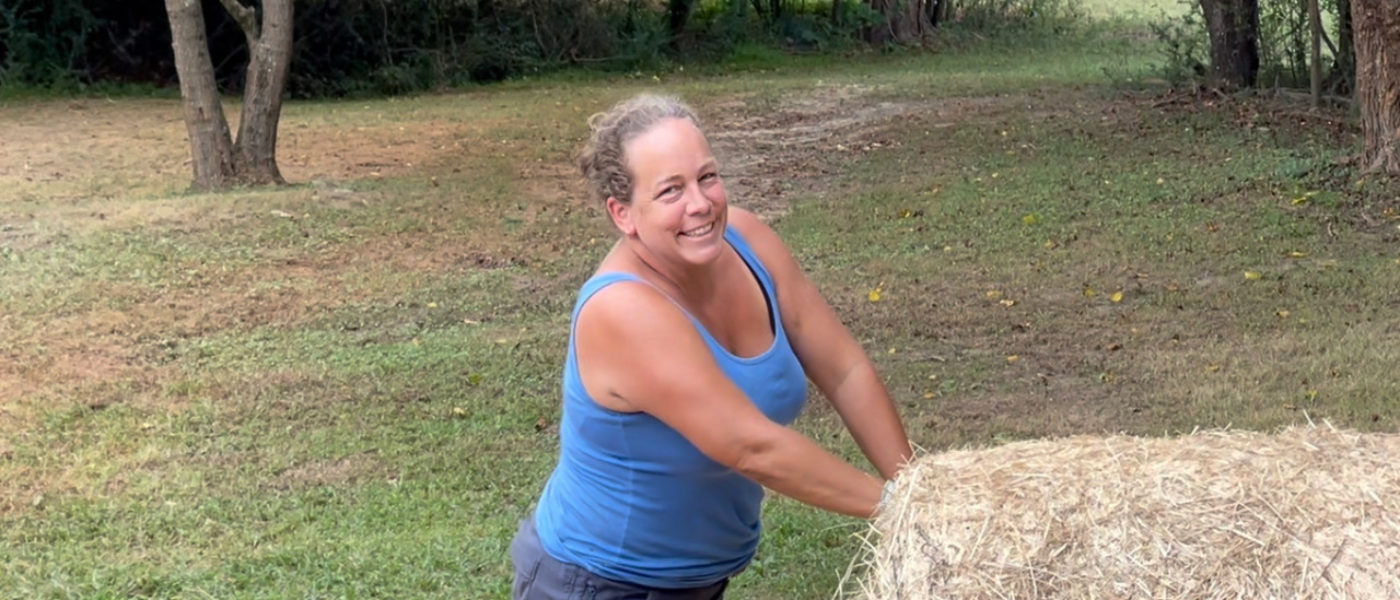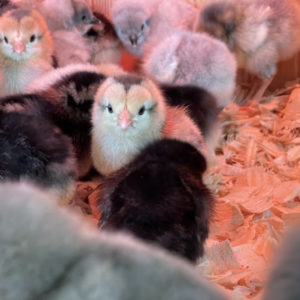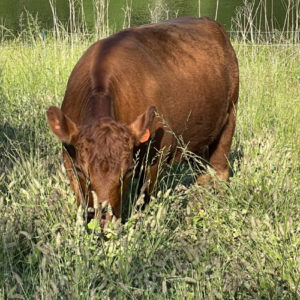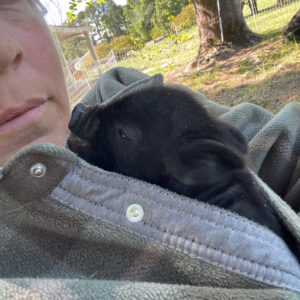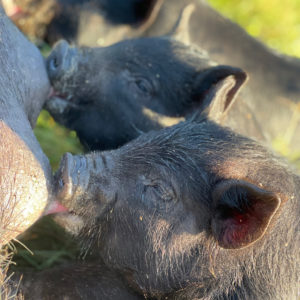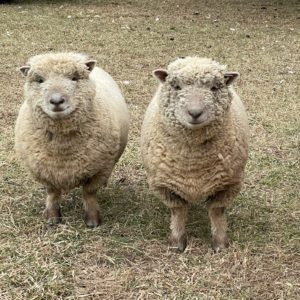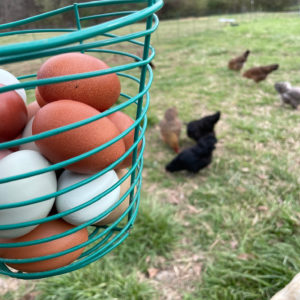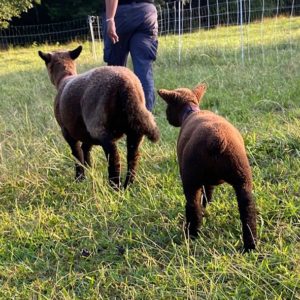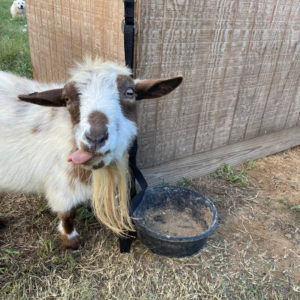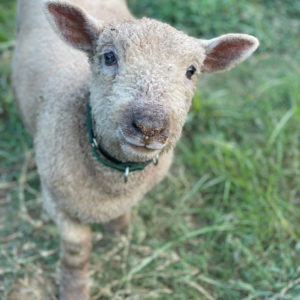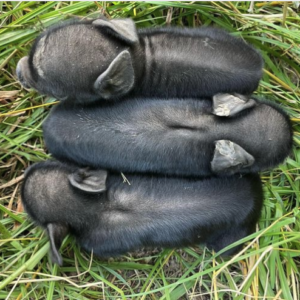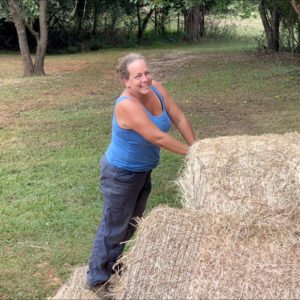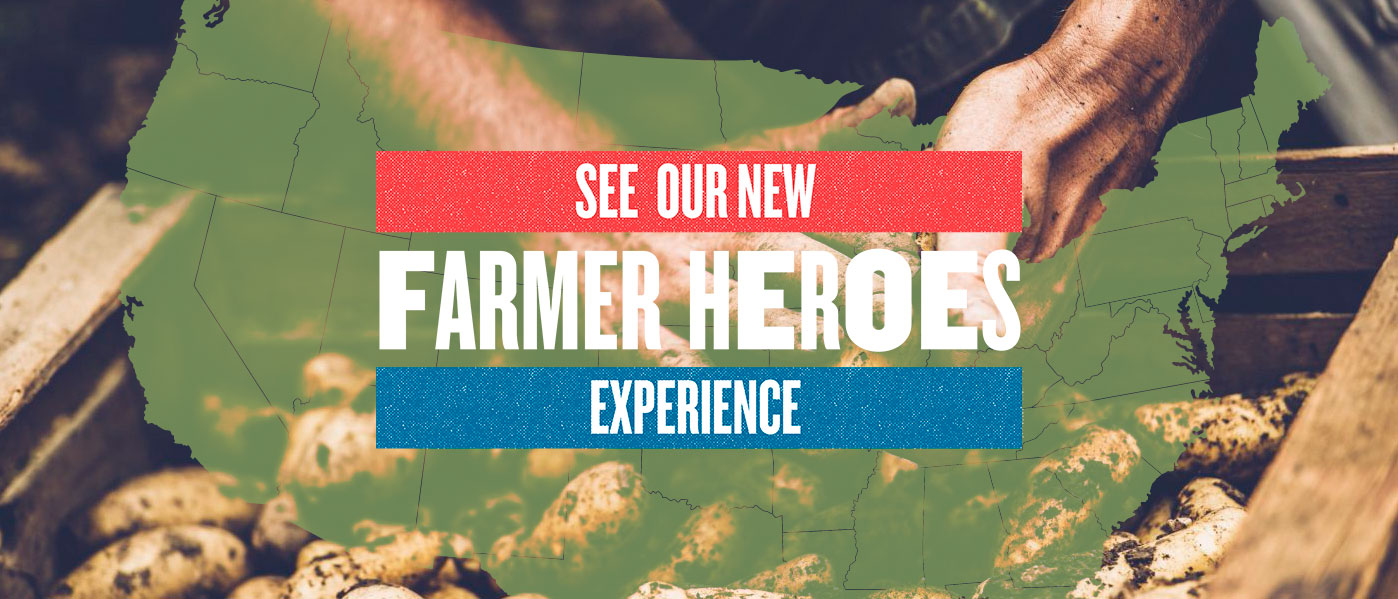Catherine Collier of Half Pint Hollow Farm in Knightdale, North Carolina, is not scared off by a challenge. Wanting to know where her food came from and how it was raised piqued her agricultural curiosity. This eventually led her to start a farm without any farming background! Below she tells how Half Pint Hollow came to be and why she considers herself first, and foremost, a grass farmer.
*Also, catch Catherine in the Farm Aid 2022 HOMEGROWN Skills Tent. Her demonstration, “Easy Does It: Backyard Animals 101,” will teach you how to manage smaller heritage breeds on compact plots of land.
Jessica: So Catherine, I’m really interested in how you got into farming. Do you come from a farming background?
Catherine: I don’t come from a farming background at all. I grew up in the suburbs of Washington, DC. I rode horses and we always had dogs but, no livestock. My parents took us to the farmers markets and I got to know the farmers. We were exposed to all types of people and products.
We would also go apple picking and berry picking, and always spend time in nature with an annual trip to Skyline Drive. We also knew an old farmer from West Virginia, Charles, who would drive his refrigerated pickup truck into town and deliver fresh chicken and eggs to our door each week. That was my normal.
As I got older I wanted to know where my food came from and how it was raised. When we bought a house in the suburbs of DC, we planted completely edible landscaping, raised chickens and kept bees. After we moved to NC, we were finally able to purchase a larger property and expand our prior suburban farming to include livestock and gardening on a larger scale.
Jessica: Wow. That’s impressive. So tell me more about Half Pint Hollow: Where is it, what do you raise, and how many acres do you have?
Catherine: Our farm is located in Knightdale, NC, 15 minutes from downtown Raleigh. We have 13 acres, including a two-acre pond. We currently raise Dexter cattle, Babydoll Southdown sheep, American Guinea Hogs, heritage breed chickens and honeybees.
We rotate all our animals on fresh pasture daily and they are free to live as they should. All animals that require feed or need supplemental feed besides pasture receive a locally milled, soy-free, organic feed and have access to species-specific minerals and fresh water at all times.
“By spending the time on improving our soil and pasture now, we will be improving our livestock and the earth, in the future.”
Jessica: You told me that you are first and foremost a grass farmer. What does this mean? And why is it so important?
Catherine: The better my soil and my grasses, the better my livestock, and thus the better the land. By providing the soil and seeds what they need, they produce better quality forage. This better quality forage is tastier and more nutritious for my animals.
Also, the better I manage my livestock on the pasture, the healthier the soil and grasses are, and the cycle continues. By improving my soil and pasture, I can aerate the ground, improve water retention and slow runoff, enabling our fields to tolerate drought much better. By spending the time on improving our soil and pasture now, we will be improving our livestock and the earth, in the future.
Jessica: What does it mean that you raise heritage breed animals?
There is no absolute standard definition for heritage breed animals yet. The qualities that I attribute to a heritage breed include: the breed was around and in use prior to the introduction of industrial agriculture practices, they breed true, they can birth without intervention and are able to raise their own young, they don’t require as many inputs and can thrive on pasture and foraging. They are slower growing and they are generally hardier breeds and less susceptible to illness or parasites.
Jessica: Do you sell your meat? If so, where?
Catherine: We do not sell our meat yet, but should have it available beginning in late fall, 2022!
Jessica: I bet you end up with some fun stories.
Catherine: Here’s one about the origin of the farm. The farm we bought used to belong to my husband’s cousin’s wife’s grandfather and we didn’t know it until after we closed. Apparently, it’s a small world in the South.
Also, we were scheduled to pick up our first sheep a few days after our scheduled closing date on the farm. However, the closing was pushed back and the sheep pickup was not. So we ended up having two sheep, a goat, and a livestock guardian dog living in the backyard of our HOA neighborhood house for a few weeks. While the sheep were living there, we welcomed twin lambs who were born under the back deck! Those lambs are still with us today.
Jessica: I know farming isn’t easy: What keeps you going and gets you up in the morning?
I absolutely love it! I love being able to teach children (and adults) about where their food comes from and why it matters. I love sharing the methods that we use to ensure healthy, happy livestock and healthy land. Also I enjoy trialing new methods and products to improve the quality and hardiness of our livestock and the efficiency with which we farm.
Money and time are huge barriers to entry for people so I try to show them what they can do with just a little money and a little time, and how that can have a big impact. Hopefully after visiting our farm [or coming to Catherine’s Skills Tent demonstration], I’ve planted the seed in someone’s mind and they too will want to know where their food comes from. And, maybe then they will either seek out a local farmer or become a farmer themself!
Jessica: Thank you so much, Catherine. We can’t wait to hear from you at Farm Aid 2022!
Check out some photos from a day in the life at Half Pint Hollow Farm!
